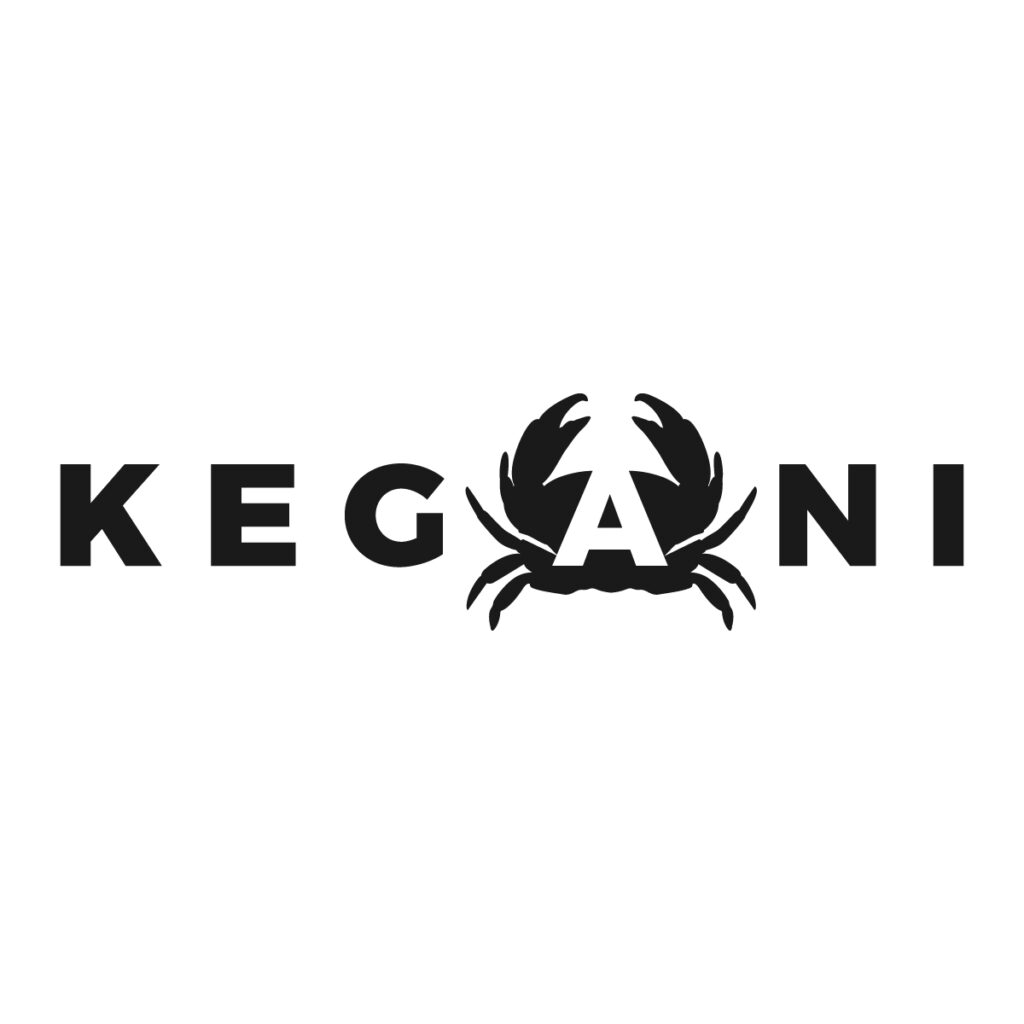Are you in the market for a knife handle that lasts long and cares for the environment? Meet Richlite, the material that’s revolutionizing knife scales.
Richlite knife scales are crafted from pressed paper and resin, creating a powerhouse combo that’s tough against water and wear. Whether you’re chopping in the kitchen or cutting kindling in the woods, your knife is up for the challenge.
But there’s more to Richlite than just toughness. These scales have a smooth finish that feels good in your grip, blending comfort with style.
Curious why so many knife makers and retailers are turning to Richlite? Stick around as we dive into the qualities that make Richlite knife scales a smart, stylish choice for your blade.
What is Richlite knife scales?
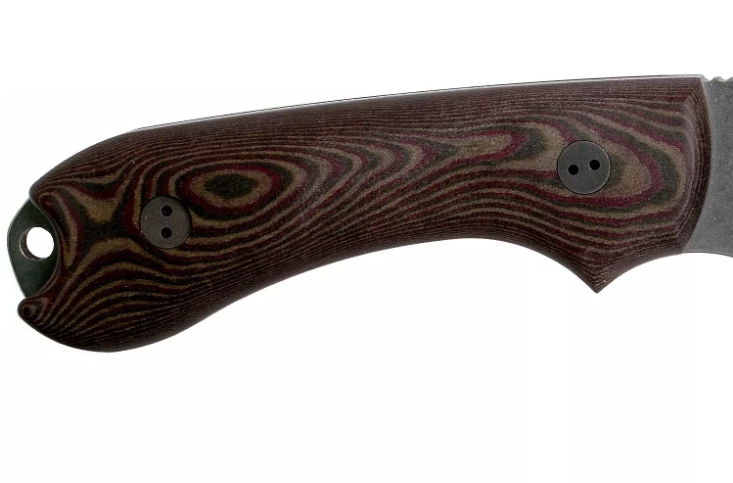
Richlite might sound like something new on the block, but it’s been around for a while—since 1943, actually.
Originally used in aerospace and skate parks, Richlite has found its niche in the world of cutlery as a durable option for knife scales.
This composite material is crafted from layers of paper saturated with resin, then pressed and baked to create a solid sheet. It comprises approximately 65% recycled paper and 35% resin.
How is Richlite made?
Wondering what goes into creating this material? Well, let’s cut to the chase:
Firstly, Richlite is crafted from layers of recycled paper. These aren’t just any paper but high-quality, post-consumer recycled paper that is a great choice for environmentally conscious users like you.
Then, these paper layers are soaked in a resin. It’s not just any resin, but a phenolic resin, which acts as a hardening agent. Using such resins ensures that Richlite has a sturdy and lasting bond between the paper fibers.
Following the infusion with resin, the layered material undergoes a compression process. This is done under high temperature and pressure, which is significant as it combines the paper and resin into a solid, non-porous slab.
Richlite’s finishing touch involves curing through a baking process that transforms it into a dense and stable product.
For a better grasp, here’s a quick rundown of the steps:
- Start with layers of recycled paper.
- Soak with phenolic resin.
- Compress under heat and pressure.
- Cure through baking to solidify.
This handling of the material is similar to working with popular culinary materials like Micarta or G-10, which means that if you’re familiar with those, you’ll take to Richlite like a knife to butter:
Micarta
Micarta is s made from layers of cloth that are soaked in a phenolic resin, causing it to harden into a sturdy material.
G-10
Think of G-10 as Micarta's close cousin, but instead of cloth, it uses fiberglass.
If you’re interested in the overall knife-making process, our article on how are knives made provides a detailed look.
Start Working with a Professional Now
Pros and cons of Richlite knife scales
When you’re considering the materials for your knife scales, Richlite offers some notable advantages and drawbacks you’ll want to keep in mind:
Pros
- Durability: It’s tough, durable, and heat-resistant up to 350°F (176°C), meaning it can take a beating without showing much wear.
- Lightweight: You won’t feel weighed down, which makes handling a breeze.
- Sustainable Choice: Richlite scales are eco-friendly, made from recycled content, and endorsed by environmental stewardship entities like the FSC and Greenguard.
- Ease of Work: If you need to customize your scales, Richlite shapes up nicely with sanding and polishing.
- Water Resistance: No need to worry about moisture; Richlite is non-porous and resists water damage.
- Evolving Aesthetic Appeal: Their mottled appearance enriches over time.
Cons
- Potential Color Shifts: Due to the thermosetting resin, Richlite knife scales might change hue over time, which could be a downside for collectors who prize consistent aesthetics.
- Uniform Appearance: Unlike natural wood grains, Richlite has a more uniform appearance, especially in darker shades. This might not appeal to those charmed by the uniqueness of traditional wooden textures.
- Specific Maintenance: While generally low maintenance, using a specialized plant-based emulsion is recommended to enhance luster and protect Richlite scales long-term.
Which knives complement Richlite knife scales?
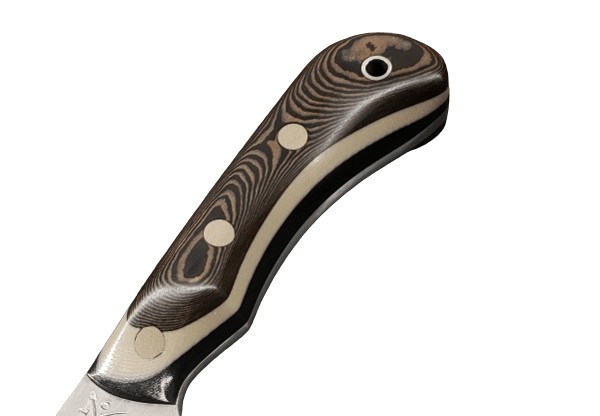
Custom and handmade knives
Richlite offers unique possibilities for custom and handmade knives. Due to its machinability, Richlite allows for a high degree of design flexibility. This means creators can easily sculpt the material into various shapes, catering to individual preferences.
The wide range of color options further enhances creative freedom, making Richlite suitable for knives intended for culinary use or personal collections.
Key features:
- Highly machinable for custom designs
- Available in a variety of colors
Kitchen knives
Richlite handles offer both aesthetic appeal and practical benefits for kitchen knives. Their attractive appearance and comfortable grip enhance the user experience. Additionally, Richlite boasts antimicrobial properties and heat resistance, making it suitable for long cooking sessions. They are also known for their resilience and ease of maintenance, qualities valued by many chefs.
Key features:
- Easy to clean
- Heat and impact resistant
Outdoor and tactical knives
Richlite’s durability and water resistance make it a viable option for outdoor and tactical knives. These handles can withstand the elements and require minimal care, making them suitable for various outdoor activities. Richlite’s strength allows it to endure harsh use in the field.
Key features:
- Weatherproof
- Stands up to demanding use
Richlite vs other knife scale material
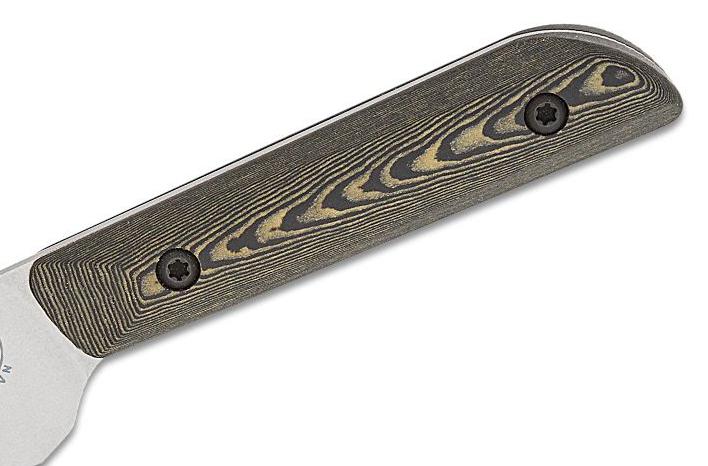
Richlite vs Micarta
When we talk about Richlite and Micarta, we’re actually comparing a specific brand to a broader category. Here’s the deal:
Micarta is a general term for a composite material made from layers of fabric or paper soaked in resin. Richlite, on the other hand, is a specific brand of paper-based Micarta. So, in essence, Richlite is a type of Micarta.
Let’s break it down:
Micarta:
- Can be made from various materials (linen, canvas, paper, etc.)
- Generally has a rougher texture, great for grip
- Appearance varies based on the base material used
Richlite (a type of paper Micarta):
- Made specifically from paper and phenolic resin
- Smoother, more wood-like feel
- Known for its excellent heat resistance (up to 176°C)
- Highly eco-friendly due to its recycled paper content
| Feature | Linen/Canvas Micarta | Richlite (Paper Micarta) |
| Materials | Linen or Canvas + Phenolic Resin | Recycled Paper + Phenolic Resin |
| Texture | Rougher, excellent grip | Smoother, wood-like feel |
| Appearance | Visible fabric texture | Wood-like grain |
| Heat Resistance | Good (up to 150°C) | Excellent (up to 176°C) |
| Eco-Friendliness | Moderate | High (uses recycled materials) |
| Water Resistance | Good | Better |
| Customization | Limited color options | Wide range of colors available |
So, when choosing between Micarta and Richlite for your knife handle, remember that Richlite offers a specific set of characteristics within the broader Micarta family. If you need a grippy handle for outdoor use, traditional canvas or linen Micarta might be your best bet. But if you’re after a smooth, wood-like feel with excellent heat resistance and eco-credentials, Richlite could be the perfect choice.
Richlite vs G10
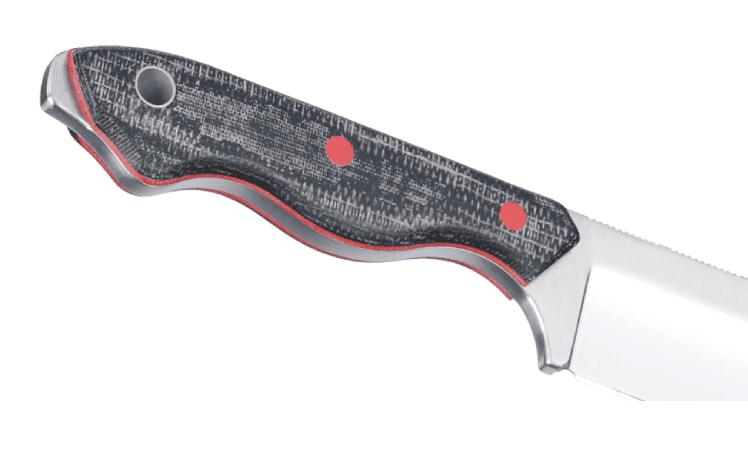
G10 and Richlite are both high-quality, durable, and moisture-resistant materials used for knife handles, but they have distinct differences:
G10 is constructed from layers of fiberglass laminate, which provides an excellent grip and superior impact resistance. In contrast, Richlite is crafted from a blend of paper pulp/fibers and resin, resulting in a handle that feels smoother and more natural in the hand.
Here’s a comparison of their attributes in tabular form:
| Attribute | G10 | Richlite |
| Material | Fiberglass laminate | Paper pulp/fibers with resin |
| Texture | Rougher to the touch | Smoother and warmer to the touch |
| Grip Strength | Outstanding | Good |
| Impact Resistance | Exceptional | Excellent |
| Aesthetic | Industrial look | Natural and rustic appearance |
So, if you need a knife handle that can handle rough outdoor activities and you want to make sure it won’t slip from your hand, G10 is the one you should pick. But if you like your knife to have a more natural look and feel, you might prefer Richlite.
Richlite vs wood
Richlite and wood are both quality materials used for knife handles. They are durable, look good, and offer a comfortable grip.
The main differences are in the material properties and maintenance needs. Richlite is made from paper pulp and resin, which gives it great waterproof qualities and impact resistance, and it doesn’t need much upkeep. Wood, on the other hand, requires regular maintenance like oiling or waxing to prevent it from drying out and absorbing water.
Here’s a table that summarizes their differences:
| Feature | Richlite | Wood |
| Material | Paper + Resin | Natural Wood |
| Waterproofing | Excellent | Average |
| Impact Resistance | Excellent | Depends on the Wood Type |
| Maintenance Needs | Low | High |
| Texture | Smooth and Warm | Naturally Warm |
| Aesthetic | Industrial | Classic Elegance |
So, if you’re looking for a knife handle that requires low maintenance and is highly durable, Richlite is a good fit. Wood, on the other hand, offers a classic beauty and a natural feel in the hand.
Richlite vs FRN
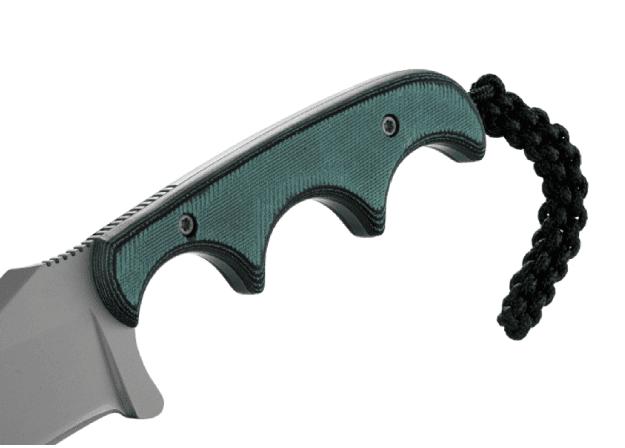
Richlite and FRN (Fiberglass Reinforced Nylon) are both strong materials used for knife handles. They’re known for their durability and strength. Both materials are waterproof, stain-resistant, and easy to clean.
The key differences lie in what they’re made of and how they feel. Richlite is created from paper pulp and resin, giving it a smooth and warm texture with a natural look. FRN is made from nylon mixed with glass fibers, which makes it a bit rougher to the touch but provides better grip and impact resistance.
Here’s a table that shows the differences:
| Feature | Richlite | FRN |
| Material | Paper + Resin | Nylon + Glass Fiber |
| Texture | Smooth and Warm | Rougher |
| Waterproofing | Excellent | Excellent |
| Impact Resistance | Excellent | Exceptional |
| Aesthetic | Natural Wood Grain | Industrial |
| Maintenance | Low | Low |
So, if you prefer a knife handle with a natural beauty and a warm feel, Richlite might be your choice. For those who need a strong grip and high durability, FRN could be the better option.
Start Working with a Professional Now
Frequently asked questions
What are the advantages of using Richlite over Micarta for custom knife scales?
Richlite offers some unique advantages such as being eco-friendly since it’s made from recycled paper. It’s also quite durable and easy to work with, making it a great material for knife scales. While Micarta offers similar features, Richlite tends to have a more uniform color and less variation, which may appeal to those looking for a consistent aesthetic.
Why might knife enthusiasts choose Richlite scales for their custom projects?
Knife enthusiasts may be drawn to Richlite scales for several reasons: the material’s sustainability, ease of maintenance, and the sleek look it offers. For those looking to blend traditional craftsmanship with modern, environmentally responsible materials, Richlite is a perfect choice.
What characteristics of Richlite make it a suitable choice for knife scales compared to other materials?
Richlite’s density and hardness are comparable to G10, offering substantial durability. Its workability allows knife makers to cut and shape it with ease. Plus, its resistance to moisture and easy maintenance make it suitable for both kitchen knives and outdoor tools. Its warmth and year-round comfort in hand set it apart from colder materials like metal or some synthetics.
Closing insight: sourcing knives with Kegani
When you’re in the market for high-quality knives, whether they’re for reselling or branding, the material of the handle is crucial. If you’re new to sourcing, our guide on how to buy knives wholesale can help you get started.
As a sourcing platform, Kegani connects you with an array of reliable Chinese manufacturers. These manufacturers are adept at combining traditional techniques with modern materials, ensuring you get a product that resonates with both knife enthusiasts and casual users alike.
- Ease of Shipment: Sourcing with us means you benefit from streamlined logistics, ensuring your knife inventory is replenished efficiently, directly from China.
- Customization: Whether it’s wholesale, OEM, or private label, you have the flexibility to tailor your order to your precise specifications.
If you’re interested in private-labeling or OEM knife manufacturers, our list will help you.
For those of you looking to expand your collection with knives that speak to quality and innovation, let’s start a conversation. Request a free quote from us today, and we’ll help you curate an assortment that stands apart.
